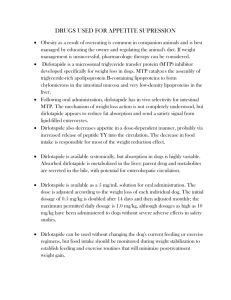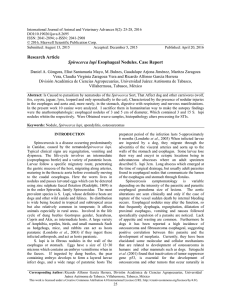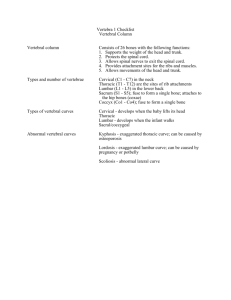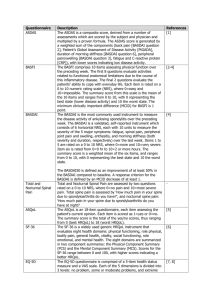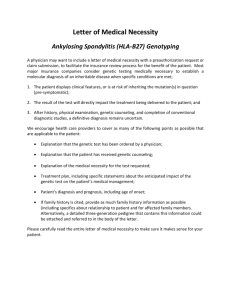Here - IVRA 2015
advertisement
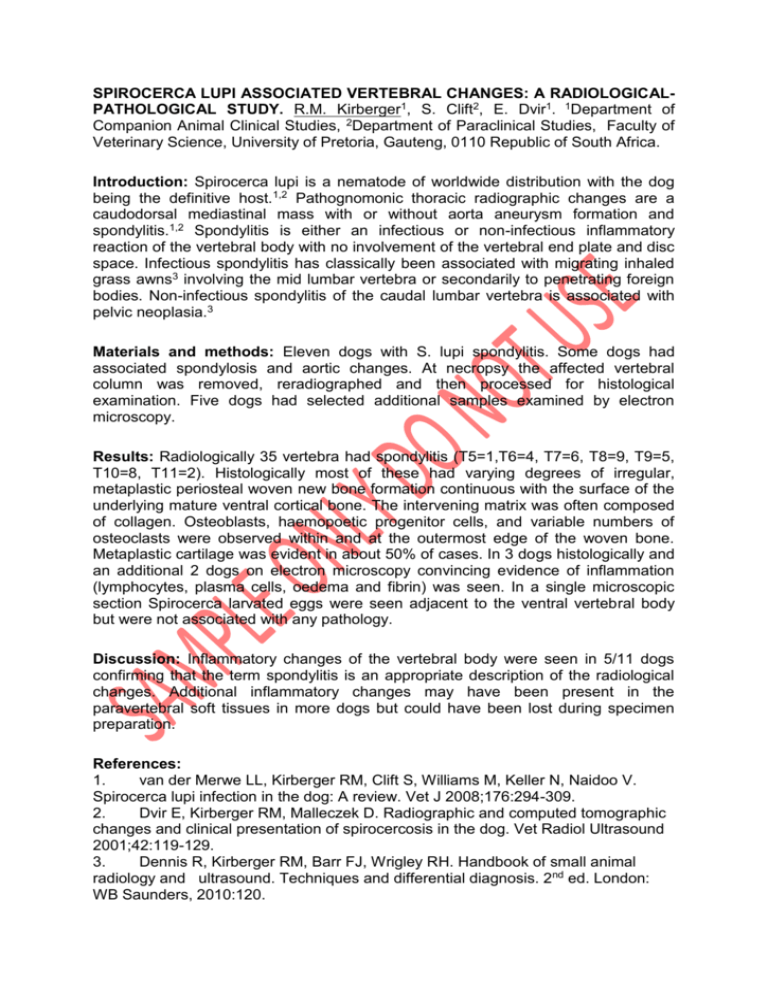
SPIROCERCA LUPI ASSOCIATED VERTEBRAL CHANGES: A RADIOLOGICALPATHOLOGICAL STUDY. R.M. Kirberger1, S. Clift2, E. Dvir1. 1Department of Companion Animal Clinical Studies, 2Department of Paraclinical Studies, Faculty of Veterinary Science, University of Pretoria, Gauteng, 0110 Republic of South Africa. Introduction: Spirocerca lupi is a nematode of worldwide distribution with the dog being the definitive host.1,2 Pathognomonic thoracic radiographic changes are a caudodorsal mediastinal mass with or without aorta aneurysm formation and spondylitis.1,2 Spondylitis is either an infectious or non-infectious inflammatory reaction of the vertebral body with no involvement of the vertebral end plate and disc space. Infectious spondylitis has classically been associated with migrating inhaled grass awns3 involving the mid lumbar vertebra or secondarily to penetrating foreign bodies. Non-infectious spondylitis of the caudal lumbar vertebra is associated with pelvic neoplasia.3 Materials and methods: Eleven dogs with S. lupi spondylitis. Some dogs had associated spondylosis and aortic changes. At necropsy the affected vertebral column was removed, reradiographed and then processed for histological examination. Five dogs had selected additional samples examined by electron microscopy. Results: Radiologically 35 vertebra had spondylitis (T5=1,T6=4, T7=6, T8=9, T9=5, T10=8, T11=2). Histologically most of these had varying degrees of irregular, metaplastic periosteal woven new bone formation continuous with the surface of the underlying mature ventral cortical bone. The intervening matrix was often composed of collagen. Osteoblasts, haemopoetic progenitor cells, and variable numbers of osteoclasts were observed within and at the outermost edge of the woven bone. Metaplastic cartilage was evident in about 50% of cases. In 3 dogs histologically and an additional 2 dogs on electron microscopy convincing evidence of inflammation (lymphocytes, plasma cells, oedema and fibrin) was seen. In a single microscopic section Spirocerca larvated eggs were seen adjacent to the ventral vertebral body but were not associated with any pathology. Discussion: Inflammatory changes of the vertebral body were seen in 5/11 dogs confirming that the term spondylitis is an appropriate description of the radiological changes. Additional inflammatory changes may have been present in the paravertebral soft tissues in more dogs but could have been lost during specimen preparation. References: 1. van der Merwe LL, Kirberger RM, Clift S, Williams M, Keller N, Naidoo V. Spirocerca lupi infection in the dog: A review. Vet J 2008;176:294-309. 2. Dvir E, Kirberger RM, Malleczek D. Radiographic and computed tomographic changes and clinical presentation of spirocercosis in the dog. Vet Radiol Ultrasound 2001;42:119-129. 3. Dennis R, Kirberger RM, Barr FJ, Wrigley RH. Handbook of small animal radiology and ultrasound. Techniques and differential diagnosis. 2nd ed. London: WB Saunders, 2010:120.





